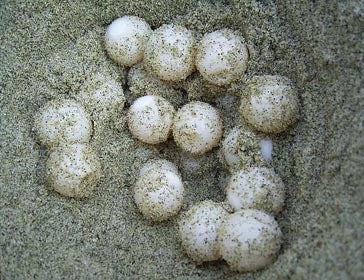Learn: Sea Turtles and Climate Change
 The following effects of climate change will have critical implications for sea turtles:
The following effects of climate change will have critical implications for sea turtles:
Severe Storms
More severe storms, such as hurricanes and tropical cyclones, could increase beach erosion rates, endangering sea turtle nesting habitat. Often severe storms could increase the chance that sea turtle nests will flood, decreasing nesting success rates.
Hotter Sands
The sex of sea turtle hatchlings is influenced by the temperature of the sand in which the eggs develop. Climate change can cause increased temperature. Higher temperatures cause the sand to heat up and lead to a higher proportion of female to male hatchlings. One study concluded that it is likely that southern populations of turtles in the U.S. will become ultra-biased towards female populations if temperatures increase by even 1 C.
Sea Level Rise
As climate change melts ice and warms the oceans, sea levels rise. Sea level rise for the end of the 21st century range from 0.18 to 0.59 meters. Even a small rise in sea level could result in a large loss of beach nesting habitats..
Changing Currents
Climate change is altering ocean currents, which are the highways that sea turtles use for migration. With changes in ocean circulation, sea turtles may have to alter their movements and possibly shift their range and nesting timing.

